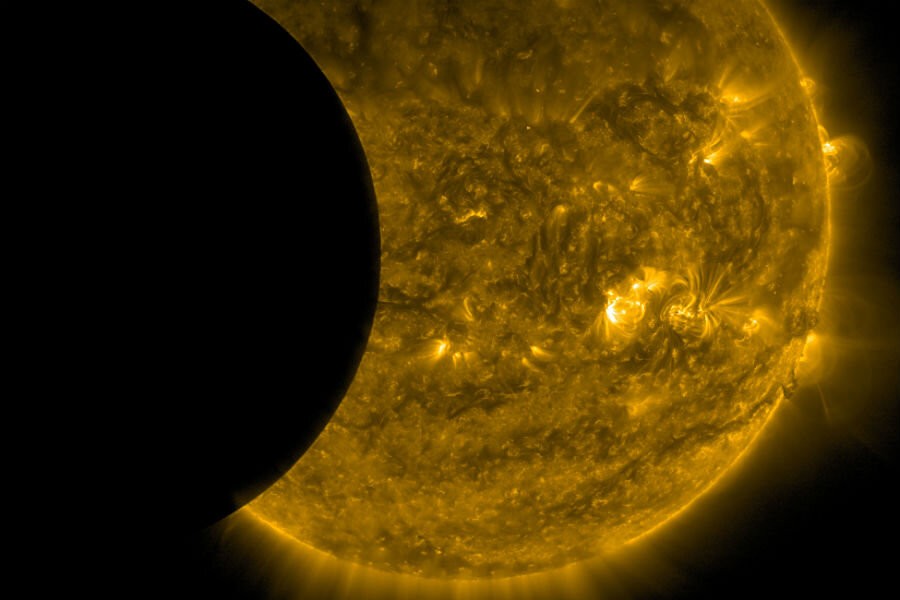Mormon church issues statement about lunar eclipse apocalpyse
Loading...
| Salt Lake City
A rare confluence of a lunar eclipse and a supermoon set to happen this weekend has prompted such widespread fear of an impending apocalypse that the Mormon Church was compelled to issue a statement cautioning the faithful to not get caught up in speculation about a major calamity.
Sunday night's "blood moon" and recent natural disasters and political unrest around the world have led to a rise in sales at emergency-preparedness retailers. Apocalyptic statements by a Mormon author have only heightened fears among a small number of Mormon followers about the looming end of time. The eclipse will give the moon a red tint and make it look larger than usual. It won't happen again for 18 years.
It's unclear how many Latter-day Saints buy the theory, but Mormon leaders were worried enough that they took the rare step this week of issuing a public statement cautioning the faithful not to get carried away with visions of the apocalypse.
Leaders of The Church of Jesus Christ of Latter-day Saints told its 15 million worldwide members that they should be "spiritually and physically prepared for life's ups and downs," but they urged them not to take speculation from individual church members as doctrine and "avoid being caught up in extreme efforts to anticipate catastrophic events."
The full statement, reported by KUTV Salt Lake City, reads:
The Church encourages our members to be spiritually and physically prepared for life's ups and downs. For many decades, Church leaders have counseled members that, where possible, they should gradually build a supply of food, water and financial resources to ensure they are self-reliant during disasters and the normal hardships that are part of life, including illness, injury or unemployment.
"This teaching to be self-reliant has been accompanied by the counsel of Church leaders to avoid being caught up in extreme efforts to anticipate catastrophic events.
"The writings and speculations of individual Church members, some of which have gained currency recently, should be considered as personal accounts or positions that do not reflect Church doctrine."
The Mormons preparing to hunker down Sunday night aren't alone. Some from other religions also fear a doomsday scenario. A Christian pastor in Texas has written a book predicting a world-shaking event.
John Hagee, founder and current leader of the Cornerstone Church in San Antonio, Texas, has been prophesying for months that the upcoming "blood moon," so named for the reddish hue that the moon takes on as it is illuminated by sunlight passing through the Earth's atmosphere, will bring calamity.
The upcoming eclipse is the fourth in a series that began on April 15 last year. Pastor Hagee told the London-based evangelical Christian news site Christian Today this next one will "point to dramatic events in the Middle East."
Pastor Hagee also sells "Blood Moon" T-shirts for $15.
Storing away enough food and water in case of disaster, job loss or something worse is part of the fundamental teachings of the Mormon religion. Many homes in Utah are equipped with special shelving for cans of beans, rice and wheat. The belief that regular history will someday end, bringing a second coming of Jesus, is embedded in the minds of Mormons and the church's official name.
Though most Latter-day Saints probably haven't even heard of this latest theory tied to the blood moon, the church's decision to address it publicly is significant and shows leaders felt the need to reassert their authority on the matter, Mormon scholars said.
"For it to filter up to that level and for them to decide to send out a policy letter means that they felt there was something they needed to tamp down on," said Patrick Mason, the Howard W. Hunter Chair of Mormon Studies at Claremont Graduate University in California
Kevin Allbee, spokesman for Utah-based Emergency Essentials, said his company has seen a steady rise since June with sales up 200 to 300 percent. He attributes it to a variety of events leading to more anxiety, including the earthquake in Nepal, Russian's intervention in the Ukraine and economic concerns in Greece and China. He said it goes well beyond Mormons in Utah. The company does most of its sales online with customers outside the state.
The public pronouncement by the church comes after leaders earlier this month sent a memo to teachers in the church's religious education system for high school and colleges telling them to be wary of Mormon author Julie Rowe's books.
Rowe writes about and speaks to audiences about a near-death experience in 2004 when she says she crossed over into the Spirit World and was shown tragic upcoming world calamities and told she would be expected to tell others in the future. "That time has come," her website proclaims. It is believed her teachings have fueled some of the speculation.
The church memo says that while Rowe is an active member of the religion, her books are not endorsed and should not be recommended as a teaching resource.
Rowe's publisher, Spring Creek Book Co. in Idaho, did not return requests for comment. She issued a statement to The Salt Lake Tribune, which reported on the rise in apocalyptic worries among some Latter-day Saints.
Rowe said she doesn't intend to make her comments church doctrine, but she chose to share her story to help people prepare for the "times we live in by increasing their faith in Christ and by looking to our prophet and church leaders for guidance."







